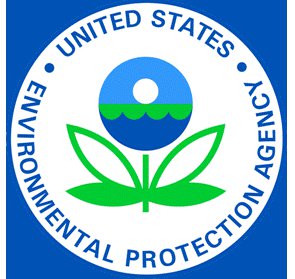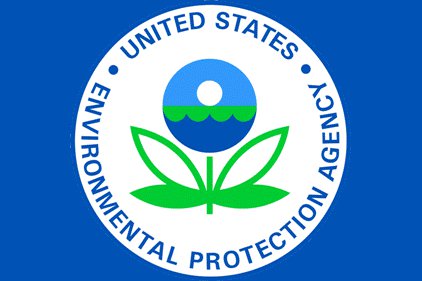 EPA Administrator Lisa P. Jackson's testimony today before the U.S. Senate, Committee on Environment and Public Works:
EPA Administrator Lisa P. Jackson's testimony today before the U.S. Senate, Committee on Environment and Public Works:
EPA's budget request of $8.344 billion focuses on fulfilling EPA's core mission of protecting public health and the environment, while making the sacrifices and tough decisions that Americans across the country are making every day.
EPA's budget request fully reflects the President's commitment to reducing government spending and finding cost savings in a responsible manner while supporting clean air, clean water and the innovative safe guards that are essential to an America that's built to last. In some cases we have had to take a step back from programs - this budget reflects a savings of $50 million through the elimination of several EPA programs and activities that have either met their goals, or can be achieved at the state or local level or by other federal agencies.
Let me spend a moment discussing major elements of EPA's budget request. This budget recognizes the importance of our partners at the state, local and tribal level. As you know, they are at the front lines of implementing our environmental laws like the Clean Water Act, and the Clean Air Act. In fact, the largest portion – 40 percent of EPA's funding request – is directed to the state and tribal assistance grants appropriation to support their efforts.
Specifically, this budget proposes that $1.2 billion - nearly 15 percent of EPA's overall request - be allocated back to the states and tribes, through categorical grants. This includes funding for state and local air quality management grants, pollution control grants and the tribal general assistance program.
The budget also proposes that a combined $2 billion - another 25 percent of EPA's budget request - also goes directly to the states for the Clean Water and Drinking Water State Revolving Funds. This funding will help support efficient system wide investments and development of water infrastructure in our communities. We are working collaboratively to identify opportunities to fund green infrastructure - projects that can reduce pollution efficiently and less expensively than traditional grey infrastructure.
Additionally, EPA's budget request would fund the protection of the nation’s land and water in local communities. Reflecting the President's commitment to restoring and protecting the Great Lakes, this budget requests that Congress maintain the current funding level of $300 million for the Great Lakes Restoration Initiative. This support will continue to be used for collaborative work with partners at the state, local and tribal level, and also with non-profit and municipal groups. The budget also requests support for protection of the Chesapeake Bay, and several other treasured and economically significant water bodies. The budget reflects the importance of cleaning up contaminated land sites in our communities by requesting $755 million for continued support of the Superfund cleanup programs and maintains the agency’s emergency preparedness and response capabilities.
EPA's budget request makes major investments in its science and technology account of $807 million, or almost 10 percent of the total request. This request includes $576 million for research, including $81 million in research grants and fellowships to scientists and universities throughout the country for targeted research as part of the Science to Achieve Results - or STAR – program, including children’s health, endocrine disruption, and air monitoring research. Also, as part of this request, EPA includes funding increases into key areas that include green infrastructure and hydraulic fracturing.
As I've mentioned before, natural gas is an important resource which is abundant in the United States, but we must make sure that the ways we extract it do not risk the safety of public water supplies. This budget continues EPA's ongoing congressionally directed hydraulic fracturing study, which we have taken great steps to ensure is independent, peer reviewed and based on strong and scientifically defensible data. Building on these ongoing efforts, this budget requests $14 million in total to work collaboratively with the United States Geological Survey, the Department of Energy and other partners to assess questions regarding hydraulic fracturing. Strong science means finding the answers to tough questions, and EPA's request does that.
We are making investments to support standards for clean energy and efficiency in this budget. Specifically, this budget supports EPA’s efforts to introduce cleaner vehicles and fuels and to expand the use of home-grown renewable fuels. This includes funding for EPA’s Federal Vehicle and Fuel Standards and Certification program to support certification, and compliance testing for all emissions standards. This also includes implementation of the President's historic agreement with the auto industry for carbon pollution and fuel economy standards through 2025 for cars and light duty vehicles, including testing support for NHTSA’s fuel economy standards.
Taken together, the Administration’s standards for cars and light trucks are projected to result in $1.7 trillion dollars of fuel savings, and 12 billion fewer barrels of oil consumed. This funding will also help support implementation of the first ever carbon pollution and fuel economy standards for heavy duty trucks.
Stepping back from EPA’s budget request, let me spend a moment discussing the impact of a sequester. Madam Chairwoman, as you know, as part of the Budget Control Act, through a sequestration, spending may be forced to be slashed in an irresponsible manner that can endanger the public health protections that we rely on and not invest in an America that's built to last. By design the sequester is bad policy, bringing about deep cuts in defense and non-defense spending to act as an incentive for congressional action on deficit reduction.
Even without the sequester, discretionary spending has already been cut in nominal terms for two straight years. Under the Budget Control Act, it is on a path to reach its lowest level as a share of GDP since the Eisenhower Administration.
If the sequester were to happen, it would bring another round of deep cuts in discretionary spending. Although the Administration is continuing to analyze the impact of the sequester, the Congressional Budget Office has said that in 2013, the sequester would result in a 7.8 percent cut in nonsecurity discretionary accounts that are not exempt from the sequester. It would be impossible for us to manage cuts of that magnitude and still achieve our fundamental mission to protect human health and the environment.
The sequester would thus have a devastating effect on our country's ability to conduct the following activities over the long haul: A sequester would result in deep cuts to EPA’s Operating Budget, which includes funds for the enforcement of public health and environmental protections. It would significantly harm our ability to help state and local governments finance needed drinking water and wastewater projects that provide communities clean and safe water. A sequester also would slash EPA grants that help states carry out basic functions that protect human health and the environment like water quality permitting and air quality monitoring. The sequester would impair progress on the country's ability to clean up the nation’s hazardous waste sites over the long haul.
The President has been clear that Congress needs to avoid a sequester by passing a balanced deficit reduction - at least as much as the Budget Control Act required of the Joint Select Committee on Deficit Reduction to avoid sequestration. The President’s Budget reflects such a balanced proposal, and we believe Congress should enact it and cancel the sequester.

